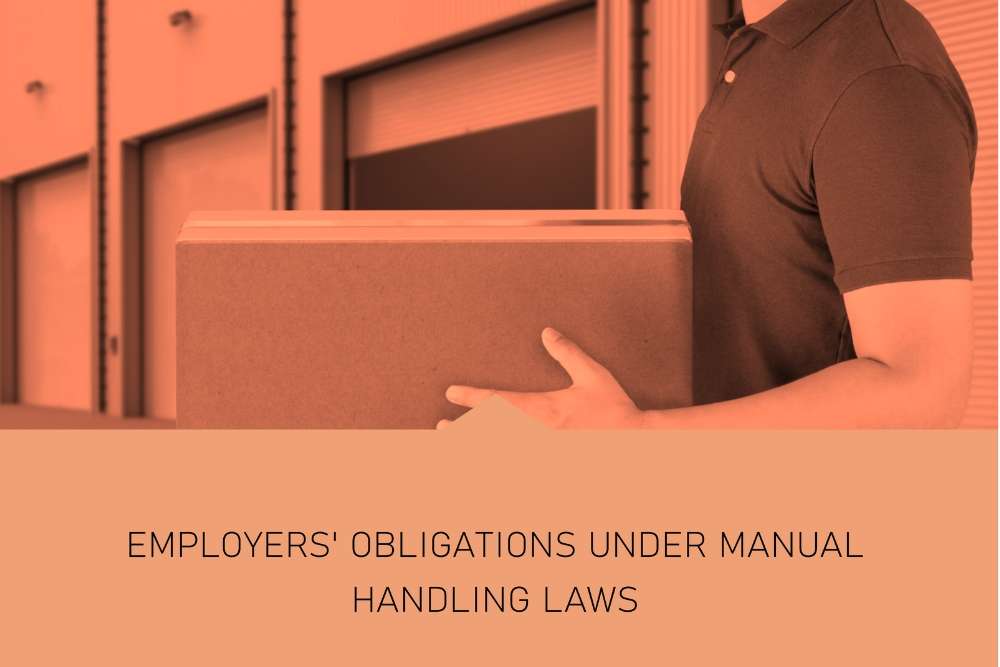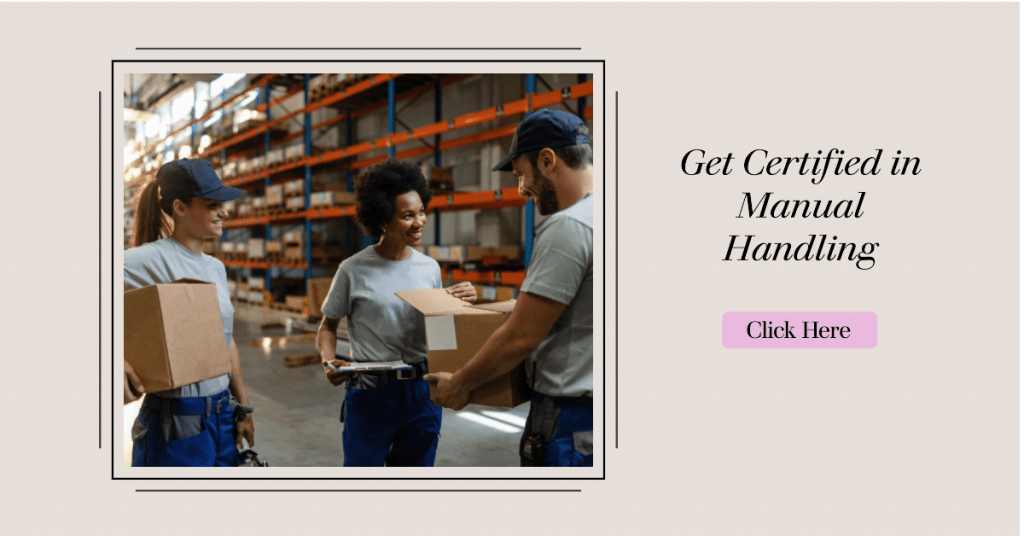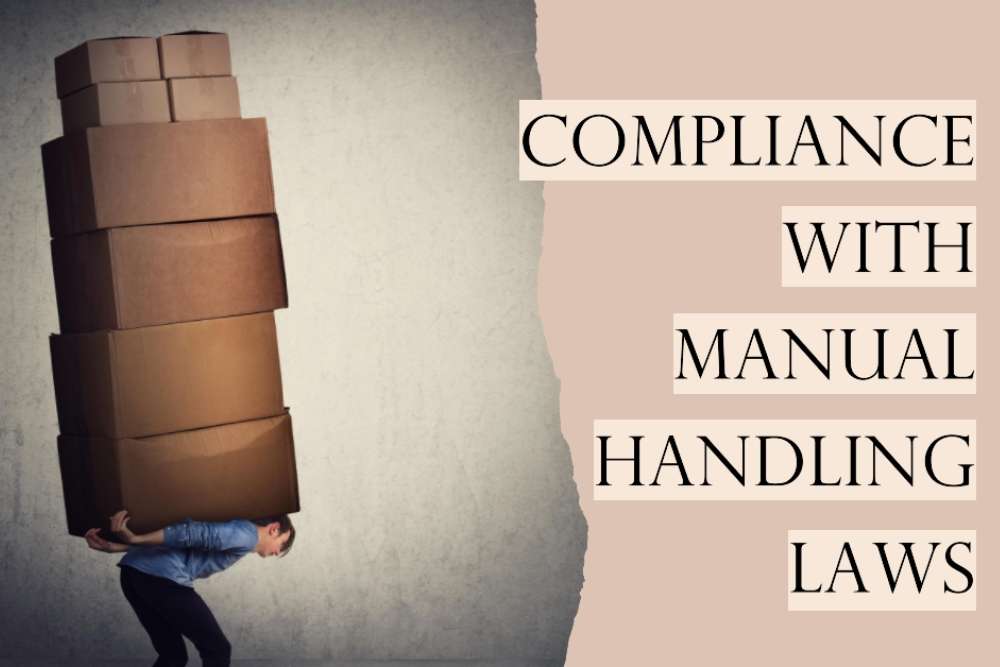In today’s world, where physical tasks are an integral part of numerous industries, the significance of manual handling laws cannot be left out. These laws play a pivotal role in ensuring the safety, health, and well-being of workers engaged in activities that involve lifting, carrying, pushing, or pulling heavy objects. With the potential for accidents, injuries, and long-term health issues associated with manual handling, regulations have been implemented to mitigate risks and protect workers from harm.
The purpose of this article is to delve into the multifaceted realm of manual handling laws and shed light on their importance within various sectors. By examining the legal frameworks established to govern manual handling practices, we aim to increase awareness and understanding of the obligations imposed on employers and employees alike. Furthermore, we will explore the practical implications of these laws and how they contribute to fostering a safe and healthy working environment.
Understanding Manual Handling Laws
A. Definition of manual handling
Manual handling refers to any activity that involves the lifting, lowering, carrying, pushing, pulling, or moving of objects or loads by hand or bodily force. It encompasses a wide range of tasks performed in various industries, such as manufacturing, construction, warehousing, healthcare, and hospitality. From lifting heavy boxes to manipulating tools or equipment, manual handling is an integral part of many job roles.
B. Overview of relevant legislation and regulations
1. Laws specific to manual handling
Several jurisdictions have established specific laws and regulations to address manual handling risks and ensure the safety of workers. These laws often outline the duties and responsibilities of employers, employees, and other stakeholders involved in manual handling activities. Examples of such legislation include the Manual Handling Operations Regulations in the United Kingdom, the Occupational Health and Safety Act in Australia, and the General Safety Regulations in South Africa.
2. Occupational health and safety regulations
In addition to laws explicitly addressing manual handling, there are broader occupational health and safety regulations that encompass manual handling as part of overall workplace safety. These regulations vary across jurisdictions but generally aim to provide a framework for employers to identify and mitigate risks associated with manual handling. They often require risk assessments, implementation of control measures, provision of training, and the maintenance of safe work systems.
C. Key objectives and principles of manual handling laws
1. Prevention of workplace injuries
The primary objective of manual handling laws is to prevent workplace injuries and promote the well-being of workers. These laws recognize the potential risks and hazards associated with manual handling activities and seek to eliminate or minimize them. By imposing obligations on employers to assess and manage these risks, the laws aim to create a safer working environment and reduce the incidence of musculoskeletal disorders, strains, sprains, and other injuries caused by manual handling.
Read more about the Risk associated with Manual Handling here.
2. Promotion of safe work practices
Manual handling laws emphasize the importance of promoting safe work practices to protect workers. They encourage the adoption of ergonomic principles, the use of mechanical aids or assistive devices, and the implementation of appropriate training programs. By integrating these practices into daily operations, employers can reduce the physical strain on employees, improve efficiency, and enhance overall productivity.
D. Impact of non-compliance with manual handling laws
1. Legal consequences and penalties
Non-compliance with manual handling laws can result in legal consequences for employers. Depending on the jurisdiction, penalties for non-compliance can range from fines and warnings to criminal charges. In some cases, businesses may face civil litigation from injured employees seeking compensation for damages resulting from unsafe manual handling practices. These legal consequences serve as a deterrent and encourage employers to prioritize compliance with manual handling laws.
2. Financial implications for businesses
Failure to comply with manual handling laws can also have significant financial implications for businesses. Work-related injuries due to non-compliance can result in increased workers’ compensation costs, medical expenses, and lost productivity. Additionally, businesses may face reputational damage and a loss of customer trust, which can have long-term financial repercussions. By investing in compliance with manual handling laws, businesses can avoid these financial burdens and create a positive workplace culture centered on safety.
Understanding manual handling laws is crucial for both employers and employees. Compliance with these laws not only helps prevent workplace injuries but also promotes safe work practices and contributes to the overall well-being of workers. Non-compliance, on the other hand, can lead to legal consequences, penalties, and financial burdens for businesses. By adhering to the principles and obligations outlined in manual handling laws, organizations can create a safer and more productive working environment for everyone involved.
Compliance Requirements
A. Assessing manual handling risks
1. Identifying hazardous manual handling tasks
Compliance with manual handling laws necessitates a thorough assessment of the tasks and activities that involve manual handling. This involves identifying tasks that have the potential to cause harm or injury to workers. By conducting a comprehensive review of job roles and work processes, employers can pinpoint tasks that involve lifting heavy objects, repetitive motions, awkward postures, or other factors that increase the risk of injury.
2. Evaluating risks associated with manual handling
Once hazardous tasks are identified, the next step is to evaluate the risks associated with them. This involves assessing factors such as the weight and size of objects, the frequency and duration of manual handling activities, the posture and biomechanics involved, and the environmental conditions. By systematically analyzing these risks, employers can gain a better understanding of the potential harm posed to workers and prioritize control measures accordingly.
B. Implementing control measures
1. Ergonomics and workplace design considerations
To promote compliance with manual handling laws, employers must implement appropriate control measures. This includes considering ergonomics and workplace design to minimize the risk of injury. Ergonomic principles focus on optimizing the interaction between workers and their work environment, aiming to reduce physical strain and improve efficiency. This may involve modifying workstations, adjusting the height of work surfaces, and providing ergonomic tools and equipment.
2. Training and education for employees
Effective compliance requires providing employees with the necessary knowledge and skills to perform manual handling tasks safely. Training and education programs should cover proper lifting techniques, body mechanics, and awareness of potential risks. By equipping employees with this knowledge, employers empower them to make informed decisions, use correct lifting methods, and identify and report potential hazards.
If you are looking for Online Manual Handling Certification Training. You may Enroll here.
3. Use of mechanical aids and equipment
Employers should explore the use of mechanical aids and equipment to reduce the physical demands of manual handling tasks. These aids can include lifting equipment, conveyors, carts, and assistive devices designed to alleviate the strain on workers. By providing and promoting the use of such aids, employers can minimize the risk of injuries related to manual handling and enhance overall workplace safety.
C. Developing safe work procedures
1. Importance of documented procedures
Documented safe work procedures play a vital role in promoting compliance with manual handling laws. These procedures provide clear instructions and guidelines for workers to follow when engaging in manual handling activities. Documenting procedures ensures consistency, facilitates training, and serves as a reference point for employees. It also helps employers demonstrate their commitment to compliance and provides a framework for ongoing improvement.
2. Tailoring procedures to specific tasks and environments
Safe work procedures should be tailored to the specific tasks and environments in which manual handling occurs. Different tasks may require distinct techniques and precautions. Considerations should include factors such as load weight and size, lifting frequency, teamwork requirements, and the availability of mechanical aids. By customizing procedures to suit the specific context, employers can address the unique risks associated with each manual handling task and enhance compliance.
D. Regular review and improvement of compliance measures
1. Monitoring and evaluating the effectiveness of controls
Compliance with manual handling laws necessitates ongoing monitoring and evaluation of control measures. Employers should regularly assess the effectiveness of implemented controls to identify areas for improvement. This may involve monitoring injury rates, conducting ergonomic assessments, and seeking feedback from workers. By gathering data and evaluating the impact of control measures, employers can make informed decisions to refine their compliance strategies.
2. Continuous improvement strategies
Continuous improvement is an integral part of compliance with manual handling laws. Employers should establish processes to foster a culture of continual improvement. This includes soliciting feedback from employees, conducting regular inspections and audits, and staying updated on industry best practices and advancements in ergonomic technology. By actively seeking opportunities to enhance compliance measures, organizations can adapt to evolving requirements and ensure the ongoing safety and well-being of their workforce.
Learn more Techniques and Proven Strangeties of Safe Manual Handling here.
Compliance with manual handling laws requires a systematic approach to assessing risks, implementing control measures, developing safe work procedures, and continuously improving compliance strategies. By prioritizing these compliance requirements, employers can create a safer working environment, reduce the risk of injuries, and demonstrate their commitment to the well-being of their employees.
Responsibilities of Employers and Employees
A. Employers’ obligations under manual handling laws

1. Providing a safe work environment
Employers have a fundamental obligation to provide a safe and healthy work environment for their employees. This includes ensuring compliance with manual handling laws by implementing measures to prevent injuries related to manual handling. Employers must take proactive steps to identify and eliminate or control hazards associated with manual handling tasks. They should prioritize the well-being of their employees by creating a culture that promotes safety and provides the necessary resources and support for compliance.
2. Conducting risk assessments and implementing controls
Employers are responsible for conducting thorough risk assessments of manual handling tasks. This involves identifying potential hazards, evaluating associated risks, and implementing appropriate control measures. By conducting these assessments, employers can determine the most effective ways to minimize risks, such as providing mechanical aids, modifying workstations, or redesigning workflows. Regular review and updating of control measures are essential to ensure ongoing compliance and worker safety.
3. Training and informing employees about manual handling risks
Employers must provide comprehensive training and information to employees regarding manual handling risks and safe work practices. This includes educating employees about proper lifting techniques, ergonomics, the use of mechanical aids, and the importance of reporting hazards. Employers should also communicate any changes in procedures, equipment, or work processes that may affect manual handling tasks. By equipping employees with the necessary knowledge, employers empower them to actively contribute to compliance efforts and protect their own well-being.
B. Employees’ role in compliance
1. Following safe work procedures and guidelines
Employees have a crucial role to play in compliance with manual handling laws. They are responsible for following safe work procedures and guidelines provided by their employers. This includes adhering to proper lifting techniques, using mechanical aids as instructed, and applying ergonomic principles in their daily tasks. By following these procedures, employees actively contribute to their own safety and minimize the risk of workplace injuries.
2. Reporting hazards and seeking assistance
Employees should be vigilant in identifying and reporting hazards associated with manual handling tasks. This includes promptly reporting any potential risks or issues they encounter to their supervisors or the designated authority. By reporting hazards, employees contribute to the overall safety of the workplace and enable employers to take timely action to address the identified risks. Additionally, employees should seek assistance or guidance when they are unsure about the proper procedures or encounter unfamiliar tasks to avoid potential risks.
3. Participating in training and awareness programs
Employees should actively participate in training and awareness programs provided by their employers. By engaging in these programs, employees gain a deeper understanding of manual handling risks, learn about preventive measures, and become more aware of their rights and responsibilities. Actively participating in these programs also allows employees to share their insights and experiences, contributing to the improvement of compliance measures and fostering a culture of safety within the organization.
Both employers and employees have significant responsibilities in ensuring compliance with manual handling laws. Employers must provide a safe work environment, conduct risk assessments, implement controls, and provide training and information to employees. Employees, on the other hand, should follow safe work procedures, report hazards, seek assistance when needed, and actively participate in training programs. By fulfilling their respective obligations, employers and employees work together to create a safe and healthy workplace that prioritizes compliance and protects the well-being of all individuals involved.
Seek Professional Guidance
A. Importance of seeking expert advice
When it comes to compliance with manual handling laws, seeking professional guidance is of utmost importance. Expert advice can provide valuable insights, ensure legal compliance, and help organizations create and maintain a safe working environment. Professionals who specialize in occupational health and safety and legal matters can offer specialized knowledge and practical recommendations tailored to specific industries and circumstances. Their expertise can save time, minimize risks, and contribute to the overall success of compliance efforts.
B. Consulting occupational health and safety specialists
Occupational health and safety specialists play a vital role in assisting organizations with compliance matters. These professionals possess in-depth knowledge of workplace safety regulations and best practices. They can conduct comprehensive risk assessments, identify potential hazards, and develop control measures specific to an organization’s needs. Occupational health and safety specialists also provide guidance on ergonomics, safe work practices, and the implementation of effective training programs. Their expertise helps organizations proactively manage risks and maintain compliance with manual handling laws.
C. Engaging legal counsel for compliance matters
Compliance with manual handling laws often involves navigating complex legal frameworks. Engaging legal counsel with expertise in occupational health and safety can provide valuable assistance in understanding and meeting legal obligations. These legal professionals can interpret relevant legislation, provide guidance on compliance requirements, and assist with the development of policies and procedures. In case of legal disputes or enforcement actions, legal counsel can represent organizations’ interests and provide defense strategies. Their expertise ensures that organizations stay abreast of legal developments and make informed decisions to maintain compliance.
By seeking professional guidance, organizations can benefit from the specialized knowledge and experience of occupational health and safety specialists and legal counsel. These professionals offer objective insights, keep organizations updated on regulatory changes, and provide practical strategies for maintaining compliance with manual handling laws. Their involvement helps organizations mitigate risks, enhance safety practices, and safeguard the well-being of their workforce.

Conclusion
In conclusion, it is crucial for organizations and individuals to take proactive steps to ensure compliance with manual handling laws. This involves assessing risks, implementing control measures, developing safe work procedures, and continuously improving compliance strategies. Seeking professional guidance from occupational health and safety specialists and legal counsel can provide valuable support in achieving compliance goals.
By prioritizing compliance with manual handling laws, organizations foster a culture of safety, protect their employees, and contribute to a productive and thriving workplace. It is the collective responsibility of employers, employees, and relevant stakeholders to work together to create a safe manual handling environment. Let us all commit to the ongoing pursuit of compliance and ensure the well-being of workers in all manual handling activities.
Frequently Asked Questions (FAQs)
Is manual handling mandatory in Ireland?
Yes, manual handling is mandatory in Ireland. Employers are legally obliged under the Safety, Health, and Welfare at Work (General Application) Regulations 2007 to assess and manage manual handling risks in the workplace.
What legislation covers manual handling in Ireland?
Manual handling in Ireland is covered by the Safety, Health, and Welfare at Work (General Application) Regulations 2007. These regulations outline the duties of employers and employees regarding manual handling tasks and aim to ensure the safety and well-being of workers.
Who certifies manual handling in Ireland?
Manual handling certification in Ireland is typically provided by qualified trainers or training organizations. However, it is important to note that certification requirements may vary depending on the specific industry or sector. Employers can seek certified trainers or training providers to conduct manual handling training and issue relevant certifications.
How long does manual handling training last in Ireland?
The duration of manual handling training in Ireland may vary depending on the training program or course. Generally, manual handling training sessions can range from a few hours to a full day, depending on the depth of the training content and practical exercises involved.
What is the weight limit for manual handling in Ireland?
There is no specific weight limit for manual handling tasks in Ireland. The emphasis is on assessing the risks associated with manual handling, regardless of the weight involved. The focus is on implementing control measures, such as using mechanical aids or modifying work processes, to minimize the risk of injuries associated with manual handling activities.
What is the validity of manual handling certification in Ireland?
The validity of manual handling certification in Ireland may vary depending on the organization or employer’s requirements. While there is no standardized validity period, it is recommended to regularly refresh and update manual handling training to stay informed about the latest best practices and any regulatory changes that may impact manual handling tasks.












